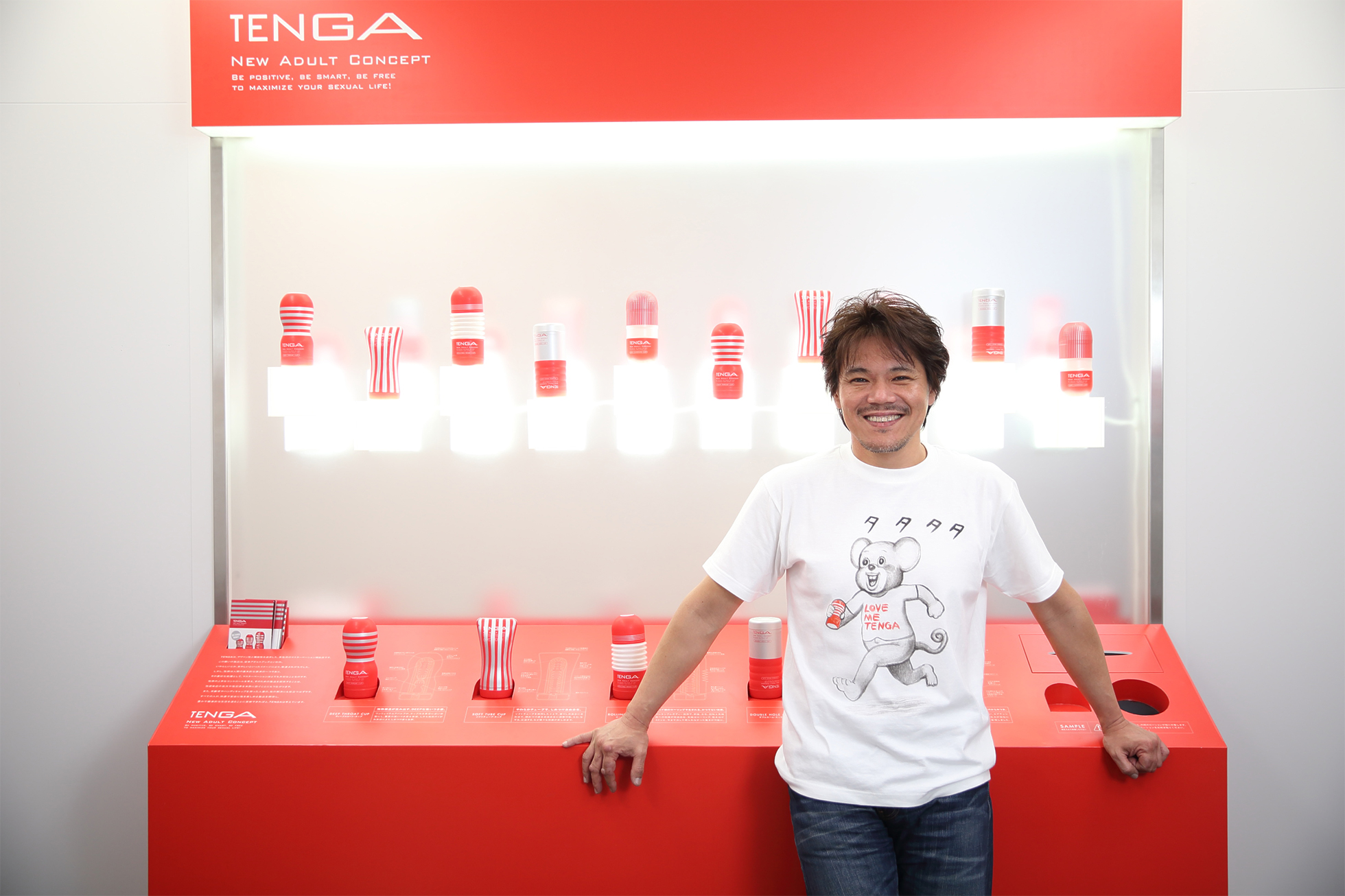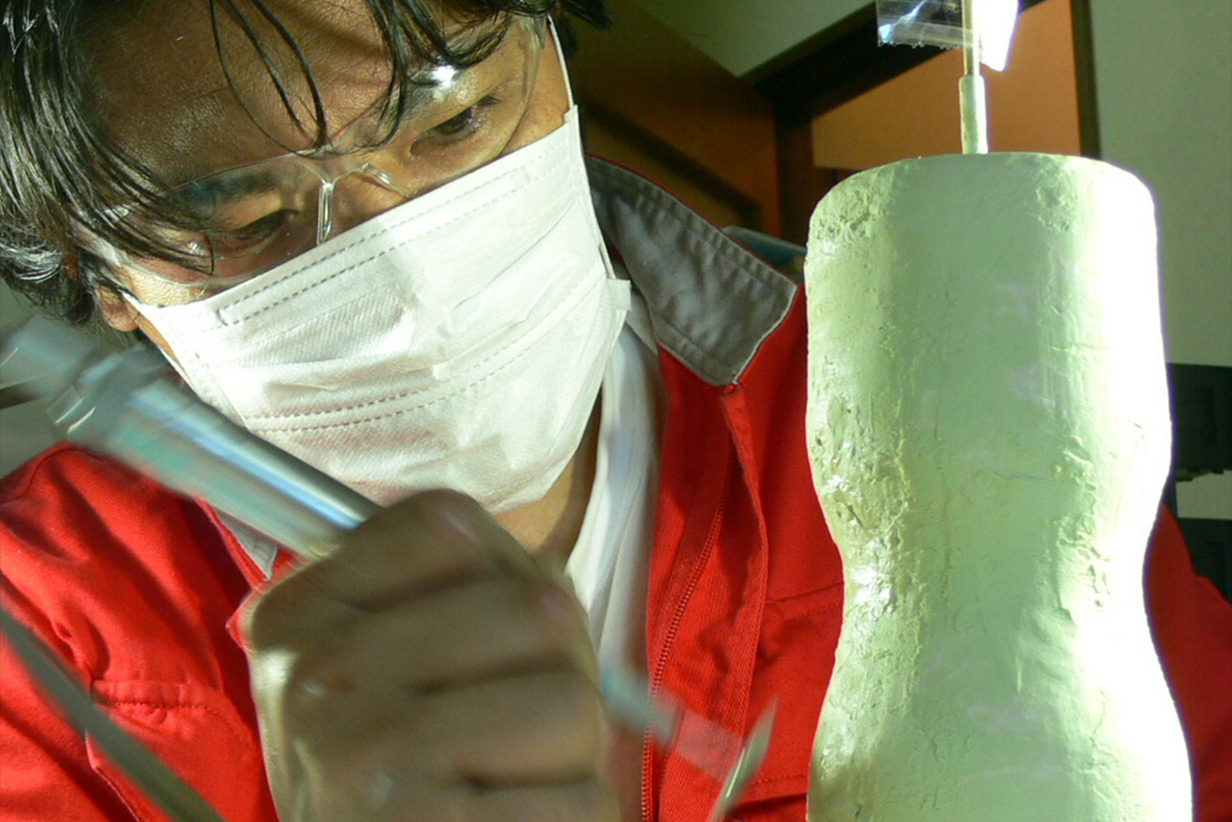TENGA Inventor Interview vol.02The Birth of TENGA


KM: It was a lack of the image of security, confidence and assurance in the products.
Could you explain in detail?
KM: The products didn’t have a barcode, nor any company name, website or contact details – anything that would make the manufacturers liable. They were overtly obscene and it was embarrassing even looking at them. I feel products for sexual pleasure are made to relieve human needs; just as people need to eat and sleep, people need to relieve sexual urges. Sleeping is cared for with pillows, blankets and beds and the urge to eat is literally catered to in infinite ways; why, then, isn’t man’s third basic urge has to be so underground? Research shows most men masturbate and almost all have tried it at least once. Why should we have to feel unsafe with the products that are supposed to deal with this need?
Unsafe?
KM: That’s right. These products convey any security for the user. In our daily lives we text on Apple smartphones, watch Sony TVs, run in a pair of NIKE shoes, and go out with LOUIS VUITTON bags. All these products are very high in quality but more importantly they all have a sense of security that comes with the brand’s label: the company’s belief in their product integrity and their liability.
I see!
KM: The problem was with the manufacturers. I’d roughly estimate over 95% of men who enter these stores masturbate; talking about sex and sexuality is increasingly the norm; importantly, it’s unhealthy to repress sexual appetite. However, back in those days the products for such a basic need were made for a very niche, very unique audience – the designs were illustrations of little girls or disembodied female sex organs, and the names were too obscene to read aloud in public. The problem I saw was that for something that was so normal such as masturbation, the products to deal with these needs were the polar opposite of normal. I knew then that there was a lot to be done.
You saw a gap in the market?
KM: For example, even if an innovator like Bill Gates was to enter an already mature market like the auto industry, to achieve not similar, but groundbreaking innovation surpassing giants like Toyota would be near impossible. The auto industry is built on trial and error, quite literally the blood, sweat and tears of engineers, mechanics and technicians for decades past. So for a man of even Bill Gates’ talent to even establish the same foundation is impossible. However, the adult industry was different. One look was all I needed to be convinced of the improvements that had to be made; the possibility to create something revolutionary. I decided then and there to commit myself. Looking back on it now it all happened in a matter of 15 minutes or so. The beginning of TENGA was like a flash, it was great. I quit my job the next day and started making prototypes. I was living off my savings of 10 million yen, waking at 6am creating non-stop til 2am the following day.
Wow! How did you feel making the prototypes?
KM: I was a clueless amateur; no experience in injection molding or anything. I just believed that I’d find a way if I kept moving forward. I made the very first prototypes just so I wouldn’t lose sight of the goal; it didn’t matter that I couldn’t see the path ahead. It was a great challenge – the fog in front of me and just pushing forward. I know that standard processes in production are important but at that time for me it was all improvisation and that was important. The fog would gradually clear and I’d see a path, following that path would reveal a challenge, and I’d carefully complete the challenge to achieve a goal. I thought that was what it was all about – looking back on it now I was completely blind! But I had to keep moving, I’d already begun and I had no time to hesitate.
Let’s call what you had, “momentum.” Was the image of success there as well? Did you have just the will to continue or did you strongly believe there was success at the end?
KM: Thinking about losing isn’t an option if you haven’t even started the fight. It’s not the image of success; it is “whatever it takes to create a tangible product close to the ideal.” A strong belief of thinking that I will make lots of people happy and that this will become a sex toy that anyone can use.
I see.
KM: These days we use a “concept-sheet” for ideas and planning the production process but at that time I didn’t have anything like this at my disposal – or knowledge! I wouldn’t write an idea down, I’d make a physical sample using cheap materials. For our CUP Series, the Original Vacuum CUP came from a water bottle, the Soft Tube CUP was a squeezable shampoo bottle, the Rolling Head CUP was made from those toy hammers for kids…! The materials came from a 100 Yen stores (like $1 stores) and the like. I looked for the right materials, I made a prototype… Then I’d destroy it. This is the real hard part. It would take me weeks to make one design but I would destroy it if it was not what I was looking for. Ultimately, though, these mistakes helped in the search for a new discovery.
